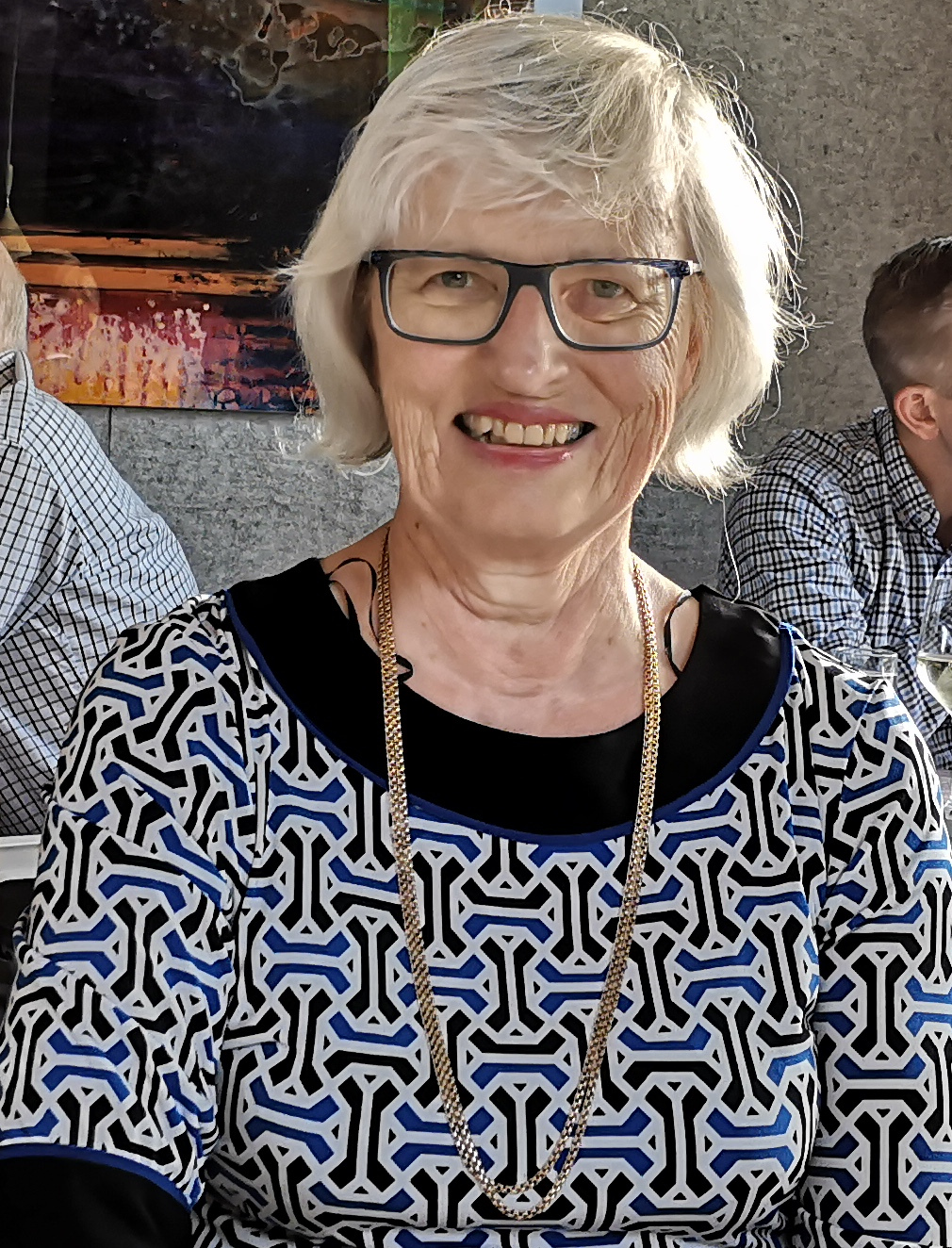 |
Aimy Bazylak University of Toronto |
|
Title: Designing porous materials for improved fuel cell and electrolyzer performance Abstract: The polymer electrolyte membrane (PEM) fuel cell and electrolyzer are composed of multiple porous materials, including the catalyst layer, microporous layer, and substrate. Commercial materials, whether by design or not, typically exhibit highly heterogeneous material and chemical properties. In order to reach cost targets for widespread commercial adoption, we must realize materials that enable more effective multiphase flow phenomena than what currently exists. Mass transport losses in PEM fuel cells and electrolyzers are both prohibitively significant. However, designing these materials requires the a priori knowledge of how the heterogeneous properties of the porous materials and their interfacial contacts influence electrochemical performance. In this work, I will discuss these critical design factors (heterogeneous porous materials and nature of interfacial contacts) and how they influence the flow and mass transport behaviour in PEM fuel cells and electrolyzers. I will also discuss the new materials we have designed and fabricated, informed by in-house numerical modelling and tested through a combination of in operando and ex situ X-ray and neutron beam characterization approaches. Bio: Prof. Aimy Bazylak is a Professor in Mechanical and Industrial Engineering and the Tier II Canada Research Chair in Thermofluidics for Clean Energy. Aimy obtained her B.Eng. in Engineering Physics from the University of Saskatchewan, and her MASc and PhD in Mechanical Engineering from the University of Victoria. In 2011, she was awarded the I.W. Smith Award from the Canadian Society for Mechanical Engineering (CSME) and became a Fellow of the CSME in 2014. In 2015 she was named an Alexander Von Humboldt Fellow (Germany), and from 2015-2018, she served as the Director of the U of T Institute for Sustainable Energy (ISE). This year, Aimy was named a Fellow of the American Society of Mechanical Engineers (FASME). Aimy’s research is focused on transport and materials for clean electrochemical energy technologies, such as fuel cells, electrolyzers, and batteries. She has been teaching in the Engineering Science Energy Systems Option since 2008, and since 2016 has served as the Energy Systems Option Chair. |
|
 |
Signe KjelstrupNTNU, Norway |
|
Title: Addressing the water scarcity problem with thermal osmosis Abstract: To describe flow in porous media Darcy’s law has been central, and rightly so. The pressure difference, or more generally the chemical potential difference, is a major driving force of flow. Other driving forces for transport, electric and gravitational fields for instance, have more particular applications. Less is known on thermal driving forces for transport in porous media. On the other hand, not only industry, also nature provide large amounts of waste heat. The use of this heat to do useful work, is therefore of interest, theoretically as well as practically. Bio: Signe Kjelstrup is presently a principal investigator of PoreLab Center of Excellence. Born in Oslo in 1949, she made her career at the Norwegian University of science and technology in Trondheim. She received a Master degree in Chemical Engineering, 1972, and PhD in physical chemistry 2 years later, both cum laude. She was the 2nd female candidate to complete her habilitation at this university, and was personally promoted as professor in 1985. Her main field is non-equilibrium thermodynamics, its foundations and applications. She has published 350 peer reviewed articles and two best-sellers on World Scientific. She was the main supervisor of 30 PhD. For these efforts she obtained the Guldberg-Waage medal from the Norwegian Chemical Society. She is a member of Norwegian Academy of Science and Letters. She was appointed adjunct professor at the Technical University of Delft, the Netherlands, 9 years, and has been visiting guest professor at University of Barcelona, Spain, University of Kyoto, Japan, University of Leiden, The Netherlands, School of Medicine and Dentistry, Ohio, USA. She holds a honorary doctorate from the University of East-China, Shenyang. |
|
 |
University of Bern |
|
Title: Microscopical lesions of the transport system of organs and their relation to clinically observable large-scale phenomena Abstract: Many diseases are directly related to microscopical lesions of the transport system of organs: Cystic fibrosis, for example, leads to obstructions of the smallest airways; Multiple sclerosis can be connected to leaking capillaries in the brain; and recovery after a heart attack can be limited by microvascular obstruction of the heart muscle. Reliable and accurate diagnosis of such lesions is important for the early detection and targeted treatment of the diseases. Unfortunately, their clinical diagnosis is very difficult, because the small structures are inaccessible to interventional instruments and the resolution of imaging modalities is too coarse. Therefore, diagnosis is typically based on limited information obtained from large-scale phenomena which can be observed clinically. We developed multi-scale models which allow us to infer the state of microscopical lesions from observable large-scale phenomena. To this end, it is helpful to model the smallest structures of an organ as porous medium which is coupled with a large-scale advective transport model. We will present several computational and experimental multi-scale models of organs and demonstrate how they can be used to support the diagnosis of diseases of the brain, heart and lung. Diagnosis of lesions of microvascular structures in the human body is difficult, because these structures are inaccessible to classical interventional instruments and the resolution of clinical imaging modalities is too coarse. Many organs of the human body can be split into large scale systems and small scale systems. Whereas the large scales are typically connected to transport processes (e.g. arteries transporting blood from the heart to the tissue), the small-scale systems are seen as the place for substance exchange (e.g. capillary blood vessels where o2 and CO2 are exchanged between blood and tissue). Pathologies of the small scale structures are difficult to diagnose and treat because of a lack of accessibility of these structures with clinical instruments and a lack of observability with the available imaging modalities. Therefore, there is a need for developing diagnostic methods which allow us to infer pathological conditions at small scale from observations at large scale. I will present methods on the example of three different organs: diagnosis of microvascular lesions in the myocardium after heart attack, in the brain of MS patients and in the lung for Cystic fibrosis and congenital microvascular malformations in the extremities. Bio: Dominik Obrist holds a degree in mechanical engineering from ETH Zurich and earned his doctoral degree in 2000 at the Department of Applied Mathematics of the University of Washington (Seattle, USA). From 2000 to 2005, he worked in various positions for the supercomputer company Cray Inc. In 2005, Dominik Obrist returned to academia as senior researcher at the Institute of Fluid Dynamics of ETH Zurich, where he established a research group for biomedical fluid dynamics. In 2013, he was appointed Professor for Cardiovascular Engineering at the ARTORG Center for Biomedical Engineering Research of the University Bern. His present research activities encompass several aspects of cardiovascular fluid mechanics (e.g. aortic valves, microcirculation) as well as other biomedical flow systems (e.g. respiratory flow, balance sense). |
|
 |
Los Alamos National Lab |
|
Title: Pore-Scale Direct Numerical Simulation of Flow and Transport in Energy and Environment Abstract: Flow and transport processes in porous media are pervasive. A better understanding of these processes is critical for addressing important problems such as petroleum and geothermal energy production, geological storage of CO2 and nuclear waste, as well as optimization of energy storage and conversion devices for improved performance. With the rapid advancement of computers and computational methods, and rapid development of X-ray tomographic imaging techniques that provide detailed pore structures for numerical simulation, pore-scale direct numerical simulation (DNS) of flow and transport in porous media has become increasingly popular. In this talk, I will present our recent work on pore-scale DNS of various flow and transport phenomena, including supercritical CO2 displacing brine in a heterogeneous micromodel and real rock; oil and water two-phase flow in fractionally wet porous media; corrosion of uranium dioxide in a geological repository; multiphase multicomponent reactive transport during CO2 dissolution trapping; as well as hydrocarbon behavior in nanopores of tight reservoirs. It is shown that pore-scale DNS can be a potentially powerful numerical tool to analyze flow and transport processes in various energy and environmental systems and can shed some light on the underlying physics occurring at the fundamental scale. Bio: Qinjun Kang is a Senior Scientist in the Earth and Environmental Sciences Division at the Los Alamos National Laboratory (LANL). He joined LANL as a Graduate Research Assistant in 2001, was selected as a Director's Postdoctoral Fellow after receiving a PhD in Mechanical Engineering from The Johns Hopkins University in 2004, and became a Staff Scientist in 2005. His current research focuses on modeling and simulation of flow and transport in porous media at the pore scale, and on multiscale models bridging different scales. His work is being applied to a wide range of problems in energy and environment, including geologic storage of CO2 and nuclear waste, hydrocarbon exploration and production, as well as engineered energy storage and conversion devices (e.g., fuel cells). He has published over 100 peer-reviewed papers, which have been cited more than 6000 times (Google Scholar). He has delivered 20+ invited talks at various universities, national labs, and industries; mentored 20+ postdocs and visiting PhD students; been on the Editorial Board of multiple journals; and served as a reviewer for more than 50 international journals and various funding agencies. |
|
|
|
|

